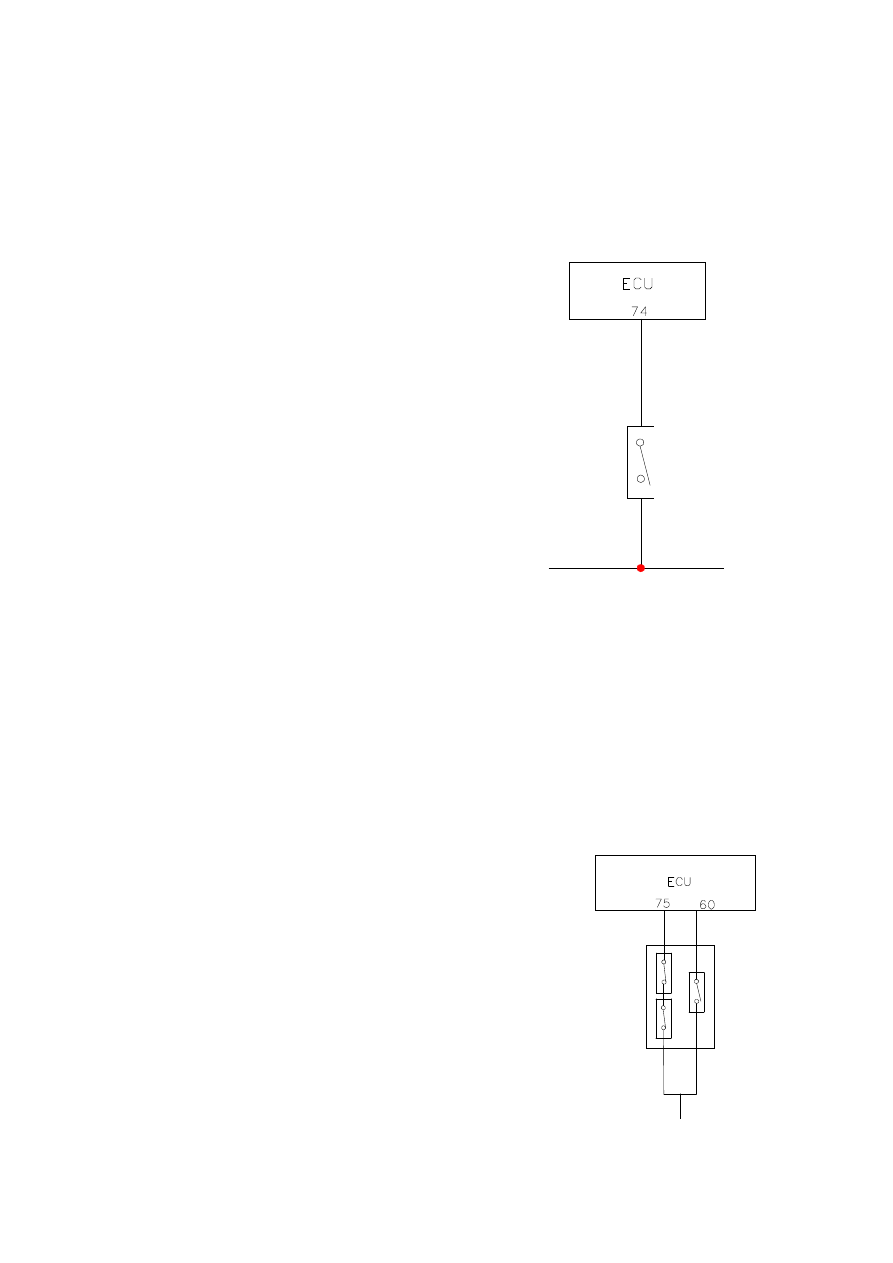Chery QQ6 (S21) / S12LHD. Manual - part 104

Clutch position switch provides ECU with the signal of clutch position, but this signal can only
be used to distinguish between disengaging and engaging positions of the clutch.
17.2 Working principle:
ECU provides clutch position switch with a 12V power supply; when the clutch is under
disengaging state, the power supply will ground and ECU will lose 12V high potential signal, by
which the position of the clutch can be judged.
18. A/C Control
By receiving the A/C signal from A/C switch, ECU can control working of A/C compressor.
ECU also can receive the signals from high and low pressure switches of A/C to ensure safety of A/C
system. When A/C signal is sent to ECU through high and low pressure switches, if the low pressure
switch breaks, ECU will not receive the A/C signal; the compressor is thus unable to work. If A/C
system has a too high pressure, the high pressure switch will break and A/C signal can not be
provided to ECU; so, ECU will immediately cut off the compressor. When system pressure is normal
or a little higher (medium pressure), the medium pressure switch will cut in; thus, ECU can control
the fan to run immediately at high speed to ensure a system pressure within the normal range.
Cut off pressure of the low pressure switch: 0.12Mpa
Cut-in pressure of the medium voltage switch: 1.6Mpa
Cut off pressure of the high pressure switch: 3.2Mpa
Through evaporator temperature sensor of the A/C system, ECU
can also protect the A/C system and prevent evaporator case from
freezing. When the temperature provided by the evaporator
temperature sensor is blow 3.75
, ECU will cut off the
℃
compressor; when the temperature is above this degree, ECU will
automatically engage the compressor to let it work.
离
合
器
位
置
开
关
C
lu
tc
h
po
siti
on
s
w
it
ch
开关
高
低
压
开
关
中
压
开
关
M
ediu
m
v
o
lt
ag
e
sw
it
ch
H
igh
a
n
d
l
o
w
v
o
lt
a
g
e
sw
it
ch
A/C switch